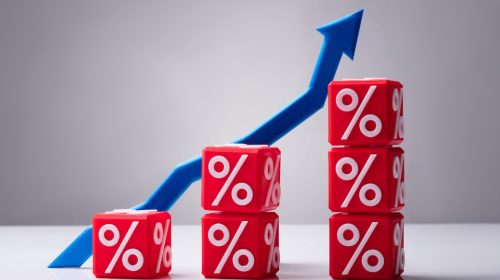Have you ever wondered how to work out a percentage increase? Whether you’re a student tackling math problems or a business owner analyzing growth, understanding the concept of percentage increase is essential. This blog post will break it down for you step-by-step, making it easy to grasp and apply in various situations.
Percentage increase refers to how something has grown or changed compared to its original value. It is crucial in many areas of our lives, from personal finances and investments to sales figures and population growth rates. By learning how to calculate percentage increases accurately, you can make informed decisions, track progress, and communicate data effectively.
So buckle up as we embark on this journey into the world of percentages! By the end of this article, you’ll have all the tools necessary to calculate percentages and understand their significance across various contexts confidently. Let’s dive right in!
What is a Percentage Increase?

Percentage increase refers to the change in a value expressed as a percentage of the original value. It measures how much a number has grown or expanded over time. Understanding percentage increases is essential for various calculations and comparisons, allowing us to easily analyze growth rates, sales figures, population changes, etc.
Importance of Percentage Increase
Understanding the importance of percentage increases is crucial in many aspects of life. Whether you’re analyzing financial data, tracking sales growth, or comparing population statistics, knowing how to calculate and interpret percentage increases allows you to make informed decisions. It helps identify trends, measure progress, and evaluate performance. Understanding percentage increases gives you a valuable tool for assessing change and making meaningful comparisons.
Common Applications of Percentage Increase
Percentage increase is a versatile concept that finds application in various fields. It is commonly used in finance to calculate investment returns, inflation rates, and salary raises. In sales and marketing, percentage increases help track market share growth or customer base. Furthermore, analyzing population growth rates and determining tax increases is crucial. Understanding how to work out percentage increases can be valuable in numerous everyday situations across different industries.
How to Work Out Percentage Increase?
Calculating Percentage Increase

To determine the percentage increase, you’ll need a straightforward formula.
- Subtract the original value from the new value.
- Divide that difference by the original value and multiply by 100. You’ll get the percentage increase between the two numbers as a result.
Formula for Percentage Increase
The formula for calculating percentage increase is quite simple. You take the difference between the new and original values, divide it by the original value, and then multiply by 100 to get the percentage increase. It can be expressed as (new value – original value) / original value * 100. This formula allows you to determine how much a quantity has increased about its initial value.
Step-by-Step Guide to Calculating Percentage Increase
To calculate the percentage increase, follow these simple steps.
- Subtract the original value from the new value to find the difference.
- Next, divide this difference by the original value.
- To find the percentage increase, multiply the value by 100.
Examples of Calculating Percentage Increase
Let’s look at a few examples to understand better how to calculate percentage increases.
Example 1: If the price of a product increases from $50 to $75, the percentage increase can be calculated as follows:
Percentage Increase = ((New Value – Old Value) / Old Value) * 100
= (($75 – $50) / $50) * 100
= (25 / 50) * 100
= 0.5 * 100
= 50%
This example demonstrates how simple it is to calculate percentage increases using the formula provided earlier.
Adding Percentage Increase to a Number

To calculate the result of a percentage increase on a number, multiply the original number by 1 plus the decimal form of the percentage increase. For example, if you want to add a 20% increase to 100, multiply 100 by (1 + 0.2), which equals 120. This method can be used for any desired percentage increase and is useful in various financial and mathematical calculations.
Calculating Time-Based Percentage Increase
When it comes to tracking growth or change over some time, calculating the percentage increase is crucial.
To do this, subtract the initial value from the final value, divide by the initial value, and multiply by 100. This method allows you to analyze and compare data in various industries, such as finance, sales, and population growth.
Alternative Methods for Calculating Percentage Increase
Using a Percentage Multiplier is an alternative method to calculate percentage increase. To use this method, multiply the original number by 1 plus the percentage increase expressed as a decimal. This results in the new value after the increase has been applied. It can be a quicker and more straightforward approach for some calculations.
Using a Percentage Multiplier

Using a percentage multiplier is an alternative method for calculating percentage increases. It involves multiplying the original value by a decimal representation of the percentage increase.
For example, if you want to calculate a 20% increase on a value of $100, you would multiply $100 by 1.20 (which represents 120%). The result would be $120, indicating a 20% increase from the original value. This method can save time and simplify calculations when dealing with larger percentages.
Conclusion
In conclusion, mastering the art of calculating percentage increases is a versatile skill applicable to various aspects of life. This blog has simplified the process, providing you with the tools to make informed decisions, whether in finance, data analysis, or negotiations. By understanding percentage increases, you gain the ability to interpret changes and project trends and enhance your analytical prowess. Embrace this skill as a valuable asset in both your personal and professional journey, and let the power of percentages guide your decision-making. Keep practising, keep calculating, and watch your confidence in numerical analysis grow.

